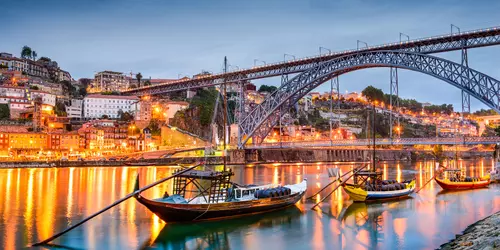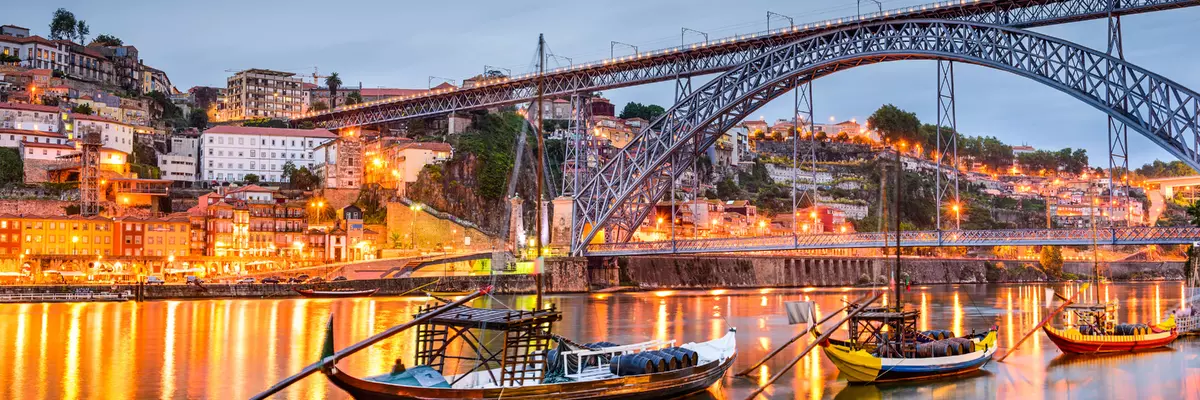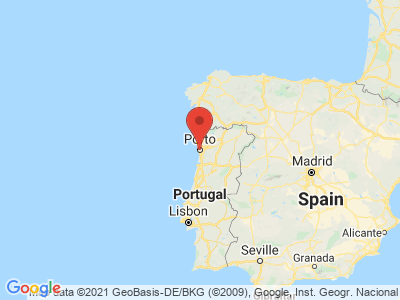Climate Table Porto
Jan | Feb | Mar | Apr | May | Jun | Jul | Aug | Sep | Oct | Nov | Dec | |
|---|---|---|---|---|---|---|---|---|---|---|---|---|
| Max. Temperature | 14° | 14° | 16° | 18° | 20° | 23° | 25° | 25° | 24° | 21° | 17° | 14° |
| Min. Temperature | 5° | 6° | 7° | 8° | 11° | 14° | 15° | 15° | 14° | 11° | 8° | 6° |
| Sun Hours | 4 | 5 | 6 | 7 | 8 | 9 | 10 | 10 | 8 | 6 | 5 | 4 |
| Water Temperature | 14° | 13° | 13° | 14° | 15° | 16° | 17° | 18° | 18° | 17° | 15° | 14° |
| Rain Days | 14 | 13 | 11 | 10 | 9 | 6 | 2 | 3 | 6 | 10 | 12 | 12 |
The climate year of Porto
Porto, located in front of the mouth of the Douro River and the Atlantic Ocean, is the second largest city after Lisbon Portugal. As one of the oldest European cities, it is strategically located at the mouth of the Duora River into the Atlantic Ocean and is often referred to as the "Capital of the North". As the namesake of the country, Porto feels like the secret capital of Portugal. Economic power and great financial resources are still concentrated in this ancient port city and commercial metropolis. Originating from a Celtic settlement at the mouth of the Douro River, the city became a bishop's seat in the early Middle Ages. Dominated by the Moors from the 8th to the 11th century, the Reconquista was able to reconquer Porto in the 12th century. In modern times, Porto was characterized by the expansion of maritime trade and the import of goods from the colonies. Today, Porto is the most important industrial and commercial city and important transport center of the country.
General information about Porto
Porto can be reached by air via the Aeroporto Porto Francisco Sá Carneiro. Porto itself can be explored very well on foot due to its manageability, but you have to be prepared for mountainous roads that can make the walk exhausting. One attraction is the annual St. John's Day festival, the Sao Joao, which takes place on the night of June 23-24. It is a large, exuberant event that attracts visitors with culinary specialties and culminates with a large fireworks display around midnight. More contemplative is the visit to the numerous Catholic churches. Above all, the twin-towered Porto Cathedral, a 12th-century building that was once a fortified church, looks down on Porto from the Pena Vetos hill. Among the culinary offerings are fish and seafood, which stand out positively from the meat offerings in terms of quality and preparation. Famous is the popular wine of the same name: the port wine. Popular and culturally valuable is a visit to the famous Museu Nacional de Soares dos Reis in the Palacio dos Carrancas, which is dedicated to the art of Portugal from the 16th to the 20th century. Since 1996, the center of Porto, located on the north bank of the Duoro River, has been included in the UNESCO World Heritage List.
Tourism Porto
Porto has a maritime climate characterized by Mediterranean influences. The Atlantic Ocean significantly determines the temperature and weather patterns. Thus, summer temperatures are moderate and winters are mild - degrees below freezing are rarely measured and snowfall almost never occurs. Rain falls mainly in the months from October to April, although the influence of the Atlantic Ocean can also cause fog in the coastal areas. The temperature development in the summer months from May to September shows a continuous increase, without stressful climatic conditions in the middle of summer - the Atlantic Ocean provides this balance, which is also responsible for the relatively small temperature differences between day and night. The visitor encounters a calm and balanced climate that is easy on the body and does not expose it to stresses such as climatic fluctuations, or high temperatures in the summer months.


